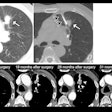Radiology has traditionally been ruled by Big Iron, but bits and bytes are becoming the coin of the realm as software adopts a more central role in the viewing, distribution, and analysis of medical images. In the years to come, software advances will make radiology professionals more efficient and productive, and perhaps even happier on the job.
Dear AuntMinnie Member,
Radiology has traditionally been ruled by Big Iron, but bits and bytes are becoming the coin of the realm as software adopts a more central role in the viewing, distribution, and analysis of medical images. In the years to come, software advances will make radiology professionals more efficient and productive, and perhaps even happier on the job.
But there’s also a downside to our increasingly computerized world (as anyone on the receiving end of the latest wave of e-mail viruses can attest). Poorly written and/or integrated software can make a user’s life miserable and can eliminate many of the productivity gains it was designed to achieve.
Proper software design is the topic of a new three-part article we’re featuring this week in our RIS Digital Community. The article, by software design firm Foliage Software Systems, describes some of the challenges in intelligent software design, and describes how to solve them through the use of product line architectures that feature a single underlying code base.
Good software architecture can effectively address the immediate needs of the clinical application at hand, while creating a platform for future growth into new product niches. Find out about other benefits to product line architecture by going to our RIS Digital Community, at http://ris.auntminnie.com. And be sure to come back, as the series continues through Thursday.


















